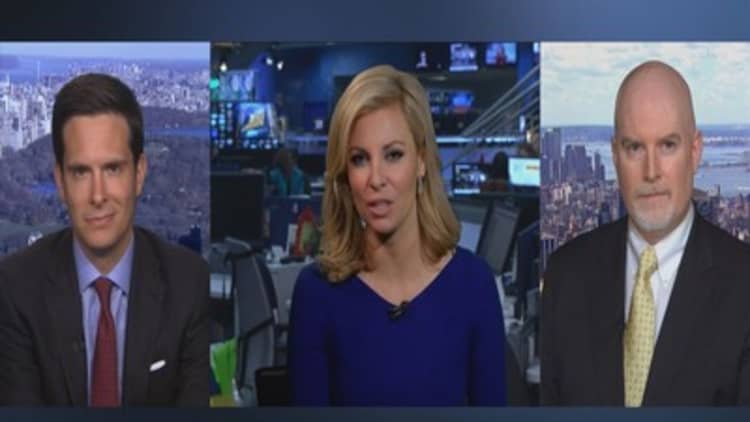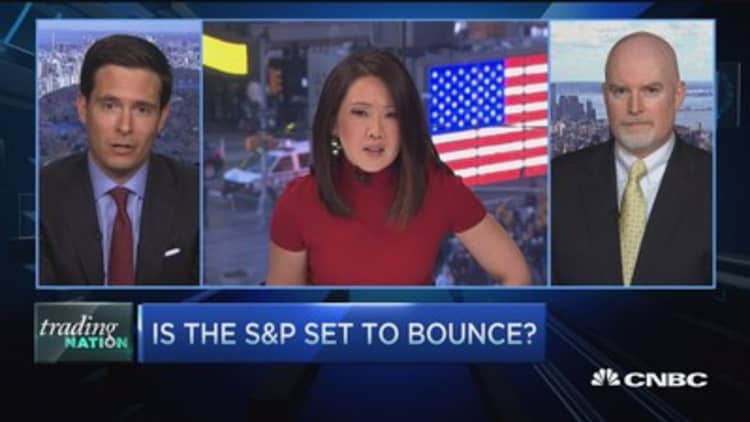


As China's stock market continues its roller-coaster ride into 2016, many market watchers are turning to an alternative measure to track what's going on in the world's second-largest economy.
Rather than looking to stock prices or economic data, investors are focused the country's currency, the yuan. Attracting that attention is the fact that the difference between the onshore yuan and the offshore yuan has reached its largest level in several years.
"It's probably more important for investors to watch the currency than the stock market," said John Vail of Nikko Asset Management, given that highly volatile Chinese stock market indexes are more likely to be influenced by government measures and swiftly changing sentiment.
The onshore yuan is circulated in China and is tightly controlled by the People's Bank of China, while the offshore yuan trades outside of China. As authorities push to create a more stable, widely used currency, the ideal difference between the two measures would likely be zero, with the value of the onshore yuan matching the offshore.
But the two diverged drastically in August, when the Chinese government allowed its currency to float more freely and sent the yuan tumbling. Recently, the yuan has taken another dive, with the offshore yuan falling on Wednesday to its lowest level since it started trading in 2010. Because the offshore currency is driven more by international markets, its relative frailty seems to reflect investor nervousness, and suggest further declines in the yuan's value.
Read More Offshore Chinese yuan plunges to five-year low against dollar
For some, that expected currency weakness could also hint at bigger problems for global markets.
"To us that is more of a reflection of some risk, and certainly is a signal that there is a risk-off attitude that permeates throughout the globe here," technician Chris Verrone of Strategas said Tuesday on CNBC's "Trading Nation." "It's not just Chinese stocks that are weak. It's much of Asia that sends a similar message."
Larry McDonald, head of U.S. macro strategy at Societe Generale, said the currency spread has previously been a warning sign for both Chinese and U.S. equities. In August, when the two measures diverged on the heels of the yuan devaluation, Chinese markets tumbled, followed by U.S. markets.
McDonald pointed to a similar pattern in the start of 2016: a widening yuan spread in December, a 7 percent drop in the Shanghai composite on the first trading day of the year, and a subsequent plunge in U.S. stocks.
"The layman will look at Chinese politics or regulation in China and try to figure it out," McDonald said, but this chart cuts through the noise. "When the spread has widened, it's a sign that people want to get their money out."
Read More The problem for stocks: 'You can't get a bottom near a top'
Weak economic data out of China has recently reignited fears over its slowing economy, the most recent of which include manufacturing and services sector activity that fell short of expectations.
As Chinese markets have become a notable influence over U.S. equities, talk of the comparison between onshore and offshore yuan rates has become more prominent. Lindsey Group analyst Peter Boockvar said the renewed focus has been spurred by the persisting weakness in the offshore yuan, and the increased tolerance of the Chinese government to let that weakness play out.
"There are moments when the Chinese authorities want to compress the two and that calms things down," he said. "The attention span is short. It goes back and forth."
Now, Boockvar said, it's a question of how much authorities will intervene as the currency spread reaches historic levels.
"It's a little disappointing for authorities," Win Thin of Brown Brothers Harriman said, since the government would like to see unification of the two values as it looks to join the International Monetary Fund's basket of freely usable currencies. As China fixes the onshore yuan rate daily, the country is trying to manage the divergence with caution, Thin said.
Read More The IMF, the SDR and the yuan explained
Nonetheless, Thin said the widening spread is the "middle station" to forming a "fully convertible currency." More weakness in the yuan should come with the process, as Chinese authorities attempt to establish a sustainable global currency.
Thin expects the worries over China and the Chinese yuan to cool in the meantime.
"We always try not to panic when things come out of China," he said. "That to me is always the wrong reaction."
Want to be a part of the Trading Nation? If you'd like to call into our live Wednesday show, email your name, number, and a question to TradingNation@cnbc.com





